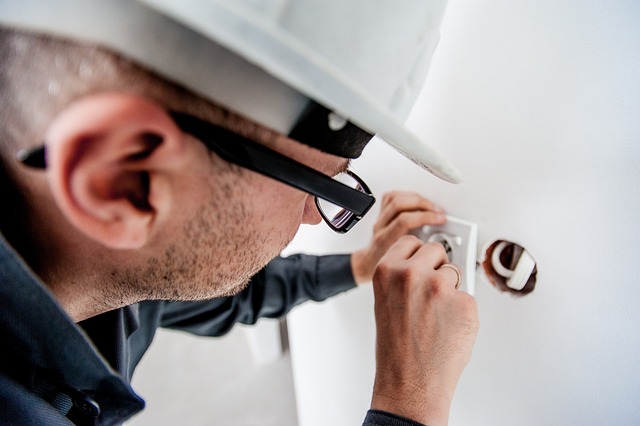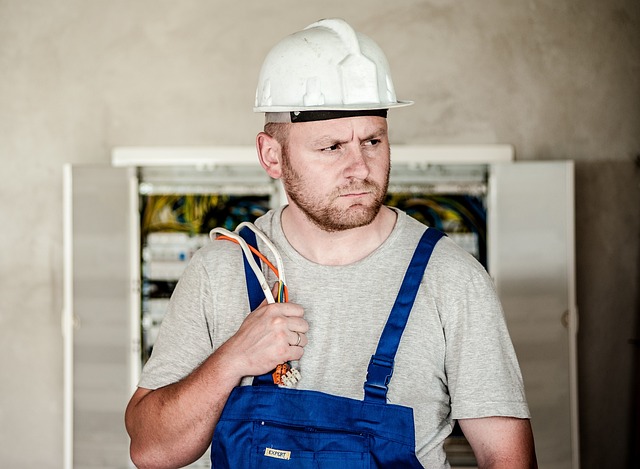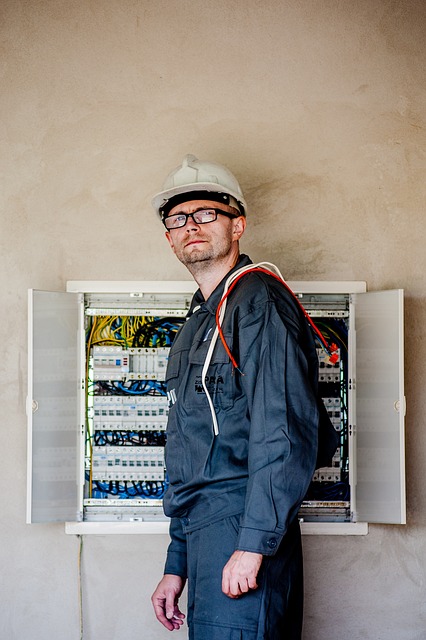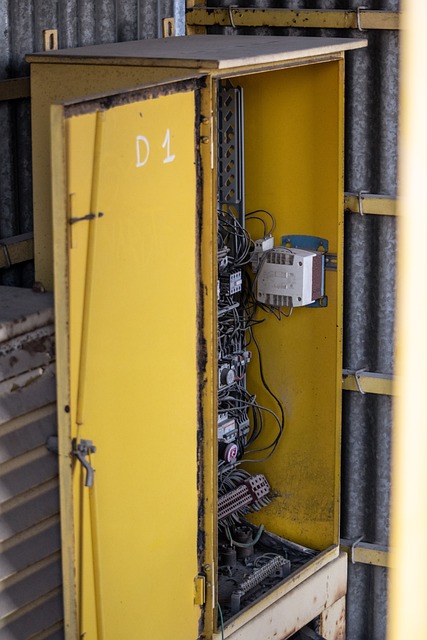Electrical wiring, essential for any construction or renovation, relies on electricians to install, maintain, and repair intricate systems. They select materials like copper or aluminum, consider voltage requirements, circuit load capacities, and adhere to national electrical codes for compliant installations. Key components include conductors, insulation, boxes, circuit breakers, and fuses. Licensed electricians prepare meticulously, assessing scope, studying plans, gathering tools, prioritizing safety through grounding and overcurrent protection. This preparation leads to efficient, safe, and code-compliant wiring projects.
“Uncover the intricacies of electrical wiring with this comprehensive guide, tailored for electricians tackling new constructions or renovations. From understanding diverse wiring types and familiarizing yourself with key components to mastering safety protocols and tools, this article is your compass.
We’ll walk you through meticulous planning, design considerations, and installation processes, ensuring every step from setting boxes to final testing is executed flawlessly. Elevate your craft, enhance efficiency, and prioritize safety—because every electrical project demands precision.”
- Understanding Electrical Wiring Systems
- – Types of electrical wiring: overview of common types used in construction
- – Basic components and terminologies
- Preparation for Installation
Understanding Electrical Wiring Systems

Electrical wiring systems are the backbone of any construction or renovation project, and understanding their intricacies is paramount for both electricians and homeowners. These systems consist of a complex network of conductors, switches, outlets, and fixtures designed to transmit electrical energy safely throughout a building. A qualified electrician plays a crucial role in installing, maintaining, and repairing these systems, ensuring they meet essential safety standards and function optimally.
The process involves careful planning and consideration of factors like voltage requirements, circuit load capacities, and the placement of electrical components to prevent overloading and potential hazards. Electricians use specialized tools and knowledge of national electrical codes to route wires discreetly through walls, floors, and ceilings, ensuring a clean and secure installation that complies with industry regulations.
– Types of electrical wiring: overview of common types used in construction

In today’s world, electrical wiring plays a crucial role in any new construction or renovation project. An electrician is often the professional responsible for installing these intricate systems, ensuring they meet safety standards and function efficiently. Common types of electrical wiring used in construction include copper and aluminum. Copper, known for its excellent conductivity, is widely used in residential and commercial buildings due to its durability and reliability. Aluminum wiring, lightweight and cost-effective, is often utilized in larger projects like industrial buildings or renovations where efficiency is key.
The choice between these wires depends on various factors, including building codes, project scope, and specific electrical requirements. Electricians must possess a deep understanding of these materials to make informed decisions, ensuring the wiring meets both aesthetic and functional needs. Proper installation by a qualified electrician is essential to prevent electrical hazards and ensure the longevity of the wiring system.
– Basic components and terminologies

When it comes to electrical wiring, understanding the basic components and terminologies is essential for any electrician tackling new constructions or renovation projects. Central to this are conductors, which are wires that facilitate the flow of electric current, measured in amperes (A). These can range from small gauge wires used for lighting to larger ones designed for heavy-duty applications like heating systems.
Another crucial term is insulation, which protects conductors from damage and prevents electrical current leakage. This is typically achieved using materials like PVC (polyvinyl chloride) or rubber. Electrical boxes are also integral, serving as enclosures that protect wiring connections and switches. Circuit breakers and fuses are safety components that interrupt the flow of electricity in case of overload, preventing short circuits and potential fires.
Preparation for Installation

Before any electrical wiring installation begins, meticulous preparation is key. A licensed electrician should thoroughly assess the project scope, ensuring compliance with local building codes and regulations. This involves studying architectural plans to identify circuit requirements, load calculations, and potential challenges unique to each space. The right tools and materials are then gathered, including appropriate wire types, connectors, switches, outlets, and fixtures.
Safety is paramount, so proper grounding techniques and overcurrent protection must be implemented. Electrical panels should be updated or upgraded if needed, ensuring sufficient capacity for the new wiring. A clear workspace is created by moving furniture and obstructions, allowing easy access to walls, floors, and ceilings. This preparation phase sets the stage for a smooth and efficient electrical wiring installation process.
When installing electrical wiring in new constructions or renovations, understanding the systems and preparing thoroughly are key. Electricians play a vital role in ensuring safe and efficient power distribution. By familiarizing yourself with various types of wiring and their components, you’re taking the first step towards a successful project. Remember, proper preparation can prevent costly mistakes, so take the time to plan and understand the intricacies of electrical installation before beginning any work.
